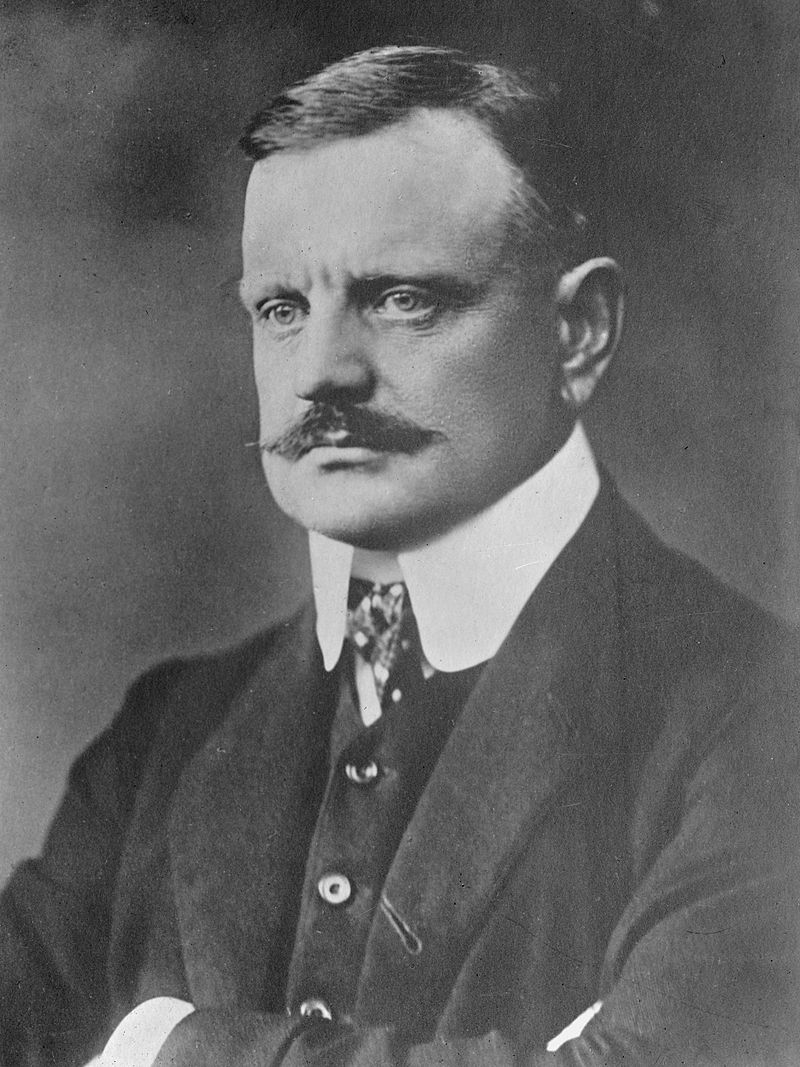|
||
|
As he approached his 50th birthday Sibelius' reputation had grown so great that he was rewarded by a commisssion from the Finnish government to write a new symphony. He completed the first version of it in 1915, and he himself conducted its first performance on his birthday, which was declared a national holiday by the government. He revised the work first in 1916, and then completed the final version of it in 1919. The years leading up to the First World War were ones of radical change in music. While some composers attempted to expand further the huge late romantic symphonies of Brahms, Dvorak and Tchaikovsky, others were taking different routes, such as impressionism, neo-classicism and expressionism. Sibelius was torn between adopting radically new harmonic and melodic devices, such as serial composition, or finding his own new way of developing his natural musical language. The third and fourth symphonies were explorations of new directions, and in the fifth symphony he established a new way of composing which outwardly resembled his earlier work, but yet contains significant innovations. Sibelius gave us an interesting insight into the way he composed his fifth symphony when he wrote in his diary "God threw down the pieces of a mosaic of heaven's floor and asked me to find the original pattern." The melodic ideas are quite short and simple, like pieces of a mosaic, and they are presented against a background of shimmering textures which shift continually, both harmonically and melodically. Some long melodic lines are syncopated, confusing the listener as to where the main beat lies, and bi-tonal passages obscure the exact harmonic centres of the work. Throughout the work Sibelius used his mastery of orchestral writing and his vivid and inventive sonorities to create a highly original symphony which looks both back to the romantic era and onward to the twentieth century. In its form, the symphony departs completely from conventional models. Scholars and critics have tried to relate its parts to traditional sonata form, but have failed to reach any agreement. Some consider the work to be closer to a tone poem than a symphony. The first movement is in two parts the first slow, the second fast, but with a gradual morphing from one to the other. The second movement is a gentle intermezzo and the third contrasts a fast section with a slower broader idea. Unity is given to the work by recurring harmonic patterns and melodic motifs. The symphony is an important example of nationalistic music. However, it is not political like Finlandia, but a celebration of Finland's natural beauty. In 1904 Sibelius moved to a new home near Lake Tuusula about thirty miles from Helsinki. Here he could enjoy the peace of the woods and the beauty of the ever changing light on the lake, and many believe that these elements inspired his musical language. One particular incident that he recalled was seeing a flight of sixteen swans over the lake. In the first movement there is a passage which is heard twice which seems to depict these mighty birds taking off from the lake and then seemingly effortlessly flying above it. In the last movement a broad swaying exhilarating passage, carried mainly by the horns, describes the flight of the formation of sixteen, and it is this musical idea that provides the noble ending to the symphony. Sibelius' 5th Symphony was performed by the Portobello orchestra on the 7th December 2019, conducted by Sam Jones. back |

